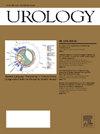泌尿外科早期职业高级实践提供者的人员流动。
IF 2
3区 医学
Q2 UROLOGY & NEPHROLOGY
引用次数: 0
摘要
目的了解高级医疗服务提供者(APP)的执业流动模式和预测因素。泌尿外科高级医师(APP)的作用已显著增强,但早期职业流动却很常见,人们对其了解甚少:我们利用 2010 年至 2021 年期间的医疗保险提供者执业和专科档案数据进行了一项回顾性队列研究。我们确定了首次在泌尿科开具医疗保险 B 部分账单的执业护士和助理医师。我们进行了时间到事件分析,以检查执业活动的风险,并通过 Cox 比例危险回归模型确定了与执业活动相关的因素:结果:在确定的 1003 名 APP 中,有 307 人(30.6%)转移到了不同的诊所,转移时间的中位数为 14 个月。与执业护士相比,医生助理更有可能流动,而且流动的 APP 多为女性,所在诊所的医生和其他 APP 也较少。离开泌尿科的大多数助理医师都转到了非外科专业,只有8.8%的人加入了另一家泌尿科诊所:结论:泌尿外科APP在职业生涯早期的执业流动很常见,离开泌尿外科执业的APP大多会转到其他专科工作。临床医生类型、性别和诊所规模等因素可能会影响执业流动。我们的研究结果表明,规模较小的诊所可能需要改进策略来留住 APP。要更好地了解这种流动的原因并确定留住人才的策略,还需要进一步的工作。本文章由计算机程序翻译,如有差异,请以英文原文为准。
Turnover Among Early Career Advanced Practice Providers in Urology
Objective
To understand the patterns and predictors of practice movement among advanced practice providers (APPs). The role of APPs in urology has grown significantly, yet early career turnover is common and remains poorly understood.
Materials and Methods
We conducted a retrospective cohort study using Medicare Data on Provider Practice and Specialty files between 2010 and 2021. We identified nurse practitioners and physician assistants who first billed Medicare Part B in urology practices. Time-to-event analysis was performed to examine the risk of practice movement, and Cox proportional hazards regression models identified factors associated with movement.
Results
Of the 1003 APPs identified, 307 (30.6%) moved to a different practice, with a median time to movement of 14 months. Physician assistants were more likely to move compared to nurse practitioners, and APPs who moved were more often female and in practices with fewer physicians and other APPs. Most APPs who left urology transitioned to non-surgical specialties, with only 8.8% joining another urology practice.
Conclusion
Practice movement among APPs in urology is common in the early career and most APPs who leave urology practices go on to work in other specialties. Factors such as clinician type, gender, and practice size may influence practice movement. Our findings suggest that smaller practices may require improved strategies to retain APPs. Further work is needed to better understand reasons for this turnover and identify strategies for retention.
求助全文
通过发布文献求助,成功后即可免费获取论文全文。
去求助
来源期刊

Urology
医学-泌尿学与肾脏学
CiteScore
3.30
自引率
9.50%
发文量
716
审稿时长
59 days
期刊介绍:
Urology is a monthly, peer–reviewed journal primarily for urologists, residents, interns, nephrologists, and other specialists interested in urology
The mission of Urology®, the "Gold Journal," is to provide practical, timely, and relevant clinical and basic science information to physicians and researchers practicing the art of urology worldwide. Urology® publishes original articles relating to adult and pediatric clinical urology as well as to clinical and basic science research. Topics in Urology® include pediatrics, surgical oncology, radiology, pathology, erectile dysfunction, infertility, incontinence, transplantation, endourology, andrology, female urology, reconstructive surgery, and medical oncology, as well as relevant basic science issues. Special features include rapid communication of important timely issues, surgeon''s workshops, interesting case reports, surgical techniques, clinical and basic science review articles, guest editorials, letters to the editor, book reviews, and historical articles in urology.
 求助内容:
求助内容: 应助结果提醒方式:
应助结果提醒方式:


